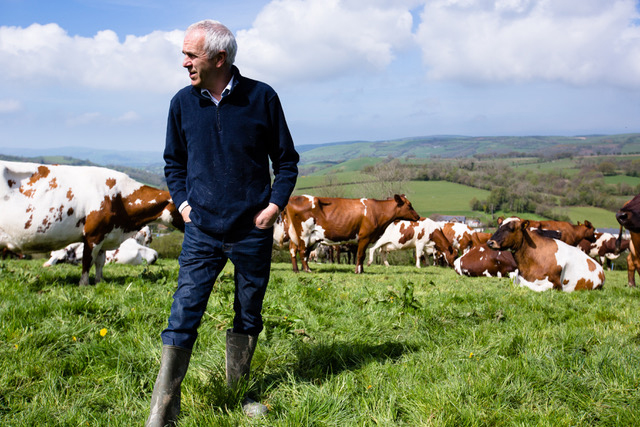Introduction

By Patrick Holden
I was delighted to have been invited to write an introduction to this book, which draws material from all the individuals who have visited Jersey and participated in the What’s For Dinner? series series of evening lectures over the last few years. As one of the participants and someone who has visited Jersey four or five times over the last 30 years, always in connection with food and farming issues, I’ve had this feeling that, as an island state, Jersey could provide real leadership in demonstrating the potential for the development of a sustainable and relocalised food system.
This could not be more important than it is today. Sir David Attenborough and most of the elite of the scientific community are now telling us that we only have 10 years to act if we are to avoid irreversible climate change. Climate change will have a critical impact on food security, at which point an island that already has a well prepared sustainable food system in place will be in a strong and resilient position to survive such threats.
So why have we not responded to this challenge until now? Perhaps the apparently limitless abundance of cheap and imported food has lulled us into a false sense of security with other consumable goods taking precedence over spending more on food. What could awaken us to this situation? The answer I suspect is a shock and it may well be that shock is coming soon!
Sustainable Farming
It’s not surprising that both farmers and consumers are increasingly asking how they should respond. What to eat to be healthy and sustainable is the crucial question. Unfortunately, this has seen a largely misinformed shift away from animal-based products. This is where the complexities of what constitutes a truly sustainable food system should be explored, and for an island like Jersey, ensuring the food system is in balance and contains all of the right components is absolutely essential.
So how is it that livestock can actually be part of the solution to climate change, not part of the problem? Most experts agree that the only way we can actually take CO2 out of the atmosphere is to rebuild the soil carbon those 50-plus years of continuous arable farming has removed. To do that, we need to switch to mixed farming systems that include a crop rotation and pastures in order to sequester carbon into the soil. The only way to get food from these pastures is by grazing them with cows or sheep. This also builds organic fertility in the soil and means we can move away from artificial nitrogen fertilisers that have been perhaps the most damaging component of modern agriculture.
The key question is how could such a switch be profitable, how can policy-makers enable farmers to adopt the sustainable practices that are needed to achieve radical change?
I don’t claim for a moment that it will be easy to address these challenges, but I’m certain that, with a combination of policy and market incentives, it should be possible to make money from sustainable farming. And, believe me, as an early adopter of this approach, I know full well that this hasn’t been the case in the past.
Unlike most farmers, who understandably have to follow the best business case in their farming, I’ve had a day job that has enabled me to put my principles into practice without jeopardising my farm’s economic viability. I’ve also been able to sell carrots and cheese into premium organic markets, an opportunity only available to a minority of farmers and consumers.
Future Government interventions should take the form of incentive payments for sustainable farming practices that build soil organic matter, ideally by redirecting the single farm payments. That’s the carrot bit.
The stick part would be the introduction of the ‘polluter pays’ principle, taxing practices and inputs that cause damage.
Will government do this? They must. If they don’t, our children will inherit a planet that is uninhabitable, due to irreversible climate change and biodiversity loss.
Radical Changes
That’s the top-down bit, but we must also harness the power of the market. We need well-informed consumers, who understand that purchasing grass-fed lamb and beef, as opposed to cheap industrial chicken, will not only help farmers rebuild depleted soil carbon, but also improve their health, because grass-fed meats are healthier and more sustainable in their impact on the planet than industrial palm oil and genetically modified soy.
To get these messages across, the farming community must unite. We must work together to identify and adopt the radical changes that are needed, and we must unite behind an educational campaign that connects people’s diets with the food that can be sustainably produced in the locality in which they live.
This on-line book is critically important in beginning that process to unite behind a common cause. Featuring leading voices in the sustainable food movement, it goes a long way to highlight the challenges we face and to outline the sort of future we need to see.
